
Alkenes Mind Map
- Subject:
- Chemistry
- Material Type:
- Diagram/Illustration
- Author:
- Heena Mehta
- Date Added:
- 08/14/2022

Alkenes Mind Map

Alkenes: Preparations and Reactions Incorporates Preparations and Reactions of Alkenes.
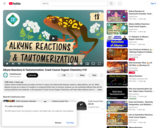
Carbon-carbon double bonds are pretty common in nature, but triple bonds between carbons, called alkynes, are not. When alkynes do pop up in nature, it’s usually in a compound that’s toxic to humans, however, we can synthesize alkynes that are life saving medicines and materials. In this episode of Crash Course Organic Chemistry, we’ll learn about alkynes and some of the reactions we can use them in (hint: it’s a lot of the same reactions we used for alkenes!)
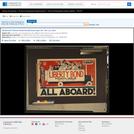
Poster showing Uncle Sam with a truck full of citizens holding Liberty Bonds. The truck bears a sign, "To Berlin." United Cigars.
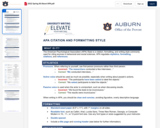
This resource provides detailed information on how to cite and write in APA style. Writers will learn how to organize their work and develop in-text and formal reference lists according to APA.
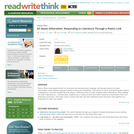
Studied students stupefy! Students learn about alliteration by listening to an alliterative read-aloud and apply the knowledge they gain to the creation of their own poem and illustration.

Short Description:
This book explores the topic of anxiety disorders. Including information on neuroscience, assessment, and intervention.
Long Description:
Anxiety disorders are one of the most common mental health disorders experienced by people in the United States. However, given their complexity, they are also one of the most misunderstood. While these disorders can be quite debilitating, appropriate assessment, diagnosis, and treatment planning are critical to the recovery process.
The chapters introduce the reader to a variety of topics. The chapters include introduction to anxiety and the nervous system, building blocks of anxiety, assessing anxiety, and cognitive and behavioral interventions. The chapters were written to build upon one another. Thus, skipping a chapter and jumping ahead can be problematic as the reader may have missed foundational material in the prior chapters.
I would like to acknowledge that as part of this open educational resource product, there were several mental health providers that peer-reviewed these chapters. I would like to extend a deep gratitude for their time, edits, and constructive feedback.
Word Count: 20017
(Note: This resource's metadata has been created automatically by reformatting and/or combining the information that the author initially provided as part of a bulk import process.)
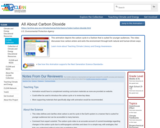
This animation depicts the carbon cycle in a fashion that is suited for younger audiences. The video discusses how carbon enters and exits the environment through both natural and human-driven ways.
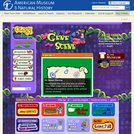
"Normally, an animal gets half its DNA from its mother and half from its father. But Dolly had three mothers: one mother gave Dolly her DNA; one supplied an egg; and the third, her surrogate mother, gave birth to her. Dolly is an identical twin of the mother who gave her her DNA. But Dolly is six years younger."This kid-friendly Web page helps kids understand how and why Dolly was cloned, and understand the potential benefits of cloning as well as the controversy it raises.

Join Simon, Anita, Emily and the rest of Ms. Patel's class as they gain an understanding of how the Earth works as a system while preparing their end of the school year play.
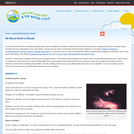
In this informational text, elementary school readers learn about the difference between weather and climate and about components of the climate system. The text can be used to practice visualizing and other comprehension strategies. Available in K-2 and 3-5 grade bands and as an illustrated book as well as a text document, the story appears in the online magazine Beyond Weather and the Water Cycle.

Have you ever wondered what defines a gemstone? Or, maybe you have a favorite and want to know how it's formed. No matter what the reason is, this resource was created to help you learn more about gemstones! This resource includes facts about rubies, sapphires, emeralds, tanzanite, opals, and diamonds including where they are formed, how they are formed, colors for each, and more! Then test your new knowledge with a quiz! Student OER: Jessica Brown, Author
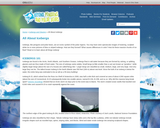
This article provides an overview of icebergs' formation and characteristics and the hazards associated with icebergs.

In this lesson plan, the traditional autobiography writing project is given a twist as students write alphabiographies—recording an event, person, object, or feeling associated with each letter of the alphabet. Students are introduced to the idea of the alphabiography through a presentation giving the instructions of how to create guidelines for writing their own alphabiographies. Students create an entry for each letter of the alphabet, writing about an important event from their lives. After the entry for each letter, students sum up the stories by writing the life lessons they learned from the events. Since this type of autobiography breaks out of chronological order, students can choose what has been important in their lives. And since the writing pieces are short, even reluctant writers are eager to write!
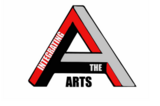
This resource was created by Sandra Schueler, in collaboration with Dawn DeTurk, Hannah Blomstedt, and Julie Albrecht, as part of ESU2's Integrating the Arts project. This project is a four year initiative focused on integrating arts into the core curriculum through teacher education, practice, and coaching.
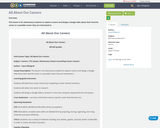
This lesson is for elementary students to explore careers and design a Google slide about their favorite career or a possible career they are interested in.
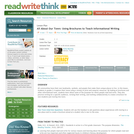
Students explore their towns' landmarks, symbols, and people; look at brochures and other informational tools; practice writing for a specific audience and revising; and work collaboratively to create a brochure.

This lesson is to get students familiar with all aspects of Space Exploration. They will have an understanding of the sun, planets, and satellites. This lesson is interactive with a video and space jeopardy.

Students learn about the differences between types of water (surface and ground), as well as the differences between streams, rivers and lakes. Then, they learn about dissolved organic matter (DOM), and the role it plays in identifying drinking water sources. Finally, students are introduced to conventional drinking water treatment processes.

What constitutes a recession? Two quarters of negative real GDP growth? Well, most of the time that “rule of thumb” definition works, but not always. The NBER Business Cycle Dating Committee has a more nuanced way of determining what a recession is. This essay discusses where recessions come from, how they are determined, and how they end.